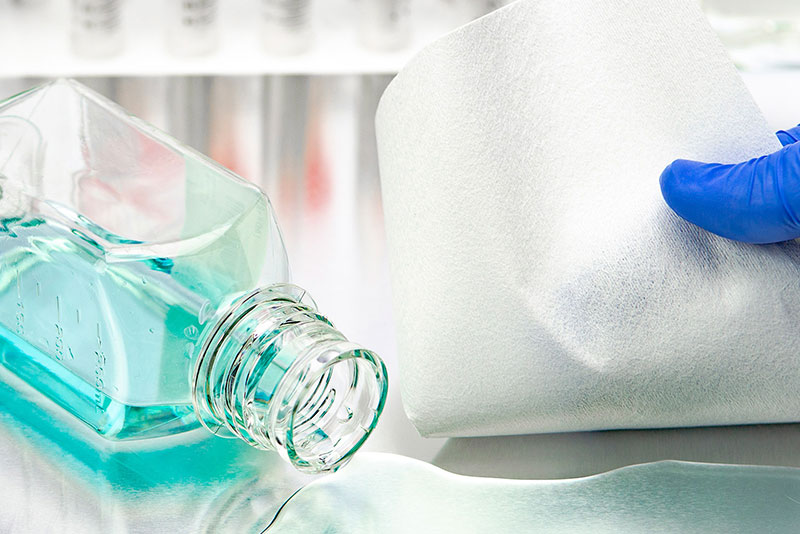Best Wiping Practices for Cleaning Production Areas in the Pharma Industry

Maintaining a clean and sterile production environment is critical in the pharmaceutical industry to ensure product safety, regulatory compliance, and high-quality outcomes. Effective wiping practices play a vital role in achieving this standard. Here, we outline the best practices for wiping production areas in the pharma sector.
1. Understand the Cleaning Requirements
- Set Cleaning Goals: Determine the level of cleanliness required based on production needs and regulatory standards like USFDA and EUGMP.
- Assess Contaminants: Identify potential contaminants such as dust, residues, or microbial presence.
2. Choose the Right Wipes
- Lint-Free Wipes: Opt for high-quality lint-free wipes to prevent particle contamination.
- Material Selection: Polyester wipes are ideal for cleanrooms due to their durability and low particulate release. Even though, non-woven lint free wipes are also suggested for specific operations.
- Dry Wipes & cleaning agents: Consider using dry wipes along with appropriate cleaning agents for efficiency and uniform application.
3. Follow a Systematic Cleaning Process
- Top-to-Bottom Approach: Always clean from higher to lower surfaces to avoid recontamination.
- Wipe in One Direction: Use unidirectional wiping motions to effectively capture contaminants.
- Overlap Strokes: Ensure overlap between strokes for thorough cleaning coverage.
4. Segment Cleaning Zones
- Critical Areas: Clean areas like laminar flow cabinets and filling stations more frequently.
- Non-Critical Areas: Allocate separate cleaning wipes for areas with lower contamination risk.
- Color-Coded wipes: Use blue wipes and white wipes for different sections to prevent cross-contamination.
5. Maintain Equipment Hygiene
- Regularly inspect and clean tools and equipment used for wiping.
- Use vacuum-sealed packs of wipes to ensure sterility until use.
6. Monitor Cleaning Agent Compatibility
- Ensure the cleaning agents used are compatible with the wipes and surfaces.
- Avoid chemical reactions that could degrade equipment or leave residues.
7. Train Staff Thoroughly
- Educate cleaning personnel on wiping techniques and cleanroom protocols.
- Conduct periodic training sessions to reinforce best practices and introduce new guidelines.
8. Conduct Routine Inspections and Audits
- Perform regular visual inspections to verify cleanliness.
- Use tools like ATP meters to measure surface cleanliness.
- Document cleaning activities and results for compliance purposes.
9. Dispose of Wipes Properly
- Use designated bins for disposing of used wipes to avoid cross-contamination.
- Follow waste management protocols as per regulatory guidelines.
10. Leverage Technology for Consistency
- Implement systems to track cleaning schedules and activities.
- Use automated reminders for periodic cleaning tasks to ensure adherence to schedules.
Conclusion
Adhering to these wiping practices helps maintain a contamination-free production environment in pharmaceutical facilities. High-quality wipes, proper techniques, and regular monitoring form the backbone of effective cleaning. By investing in the right tools and training, pharmaceutical companies can uphold stringent cleanliness standards, ensuring product integrity and regulatory compliance.

